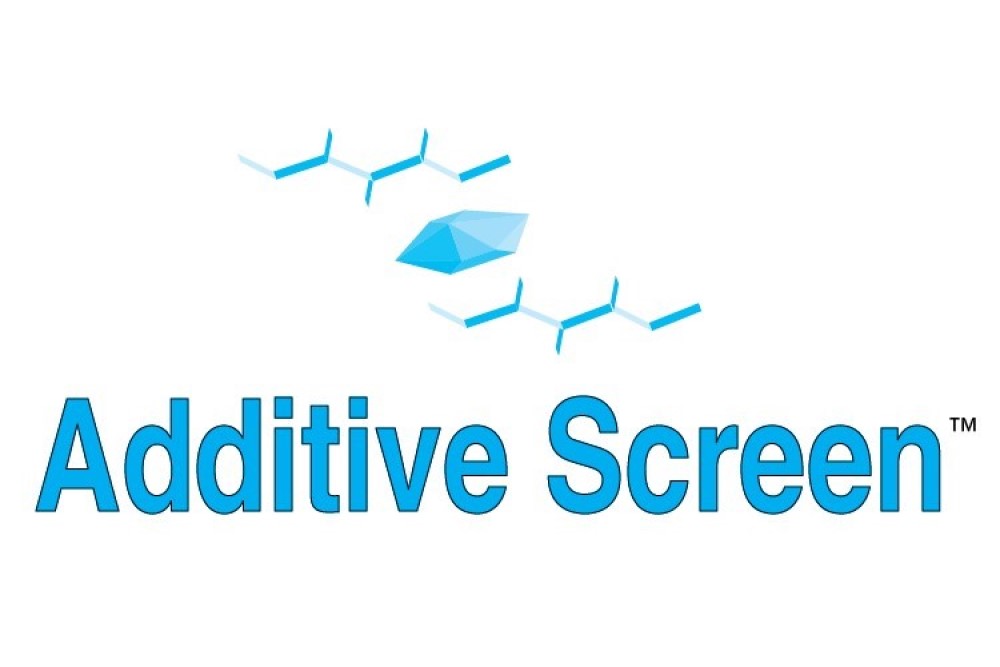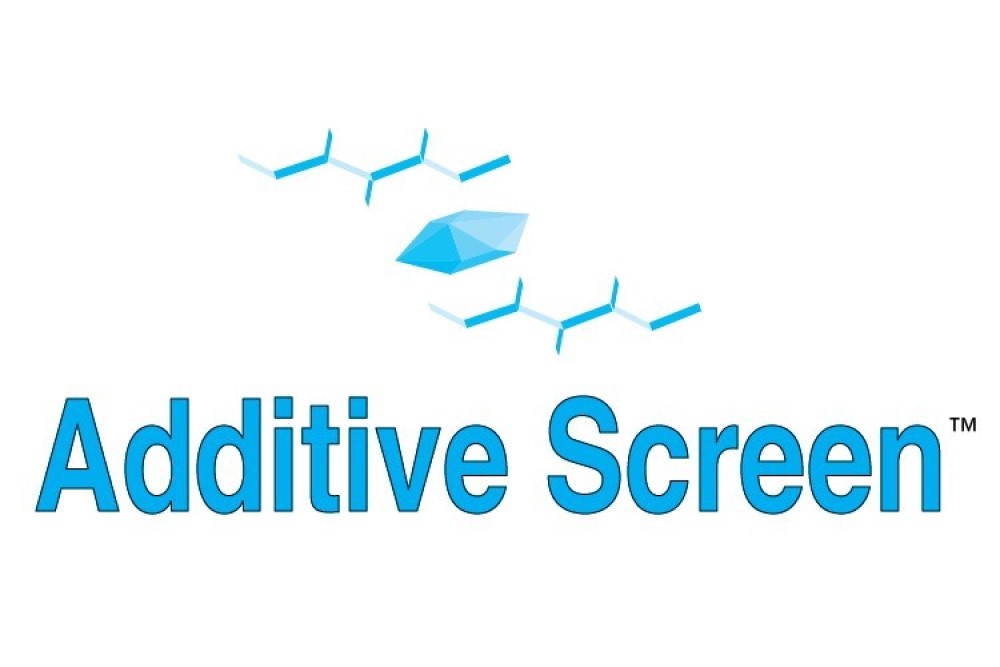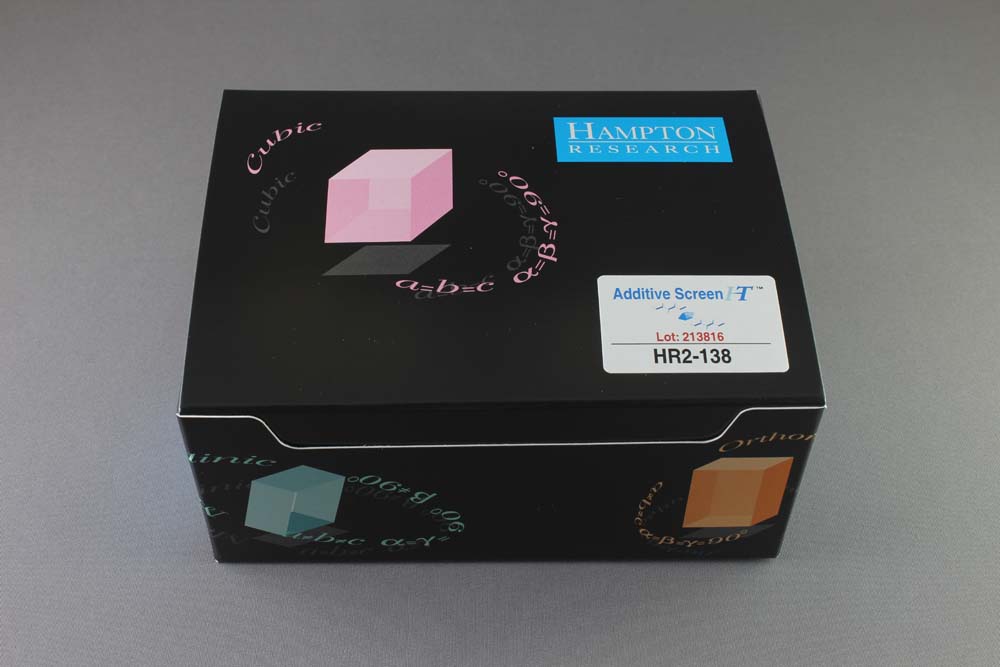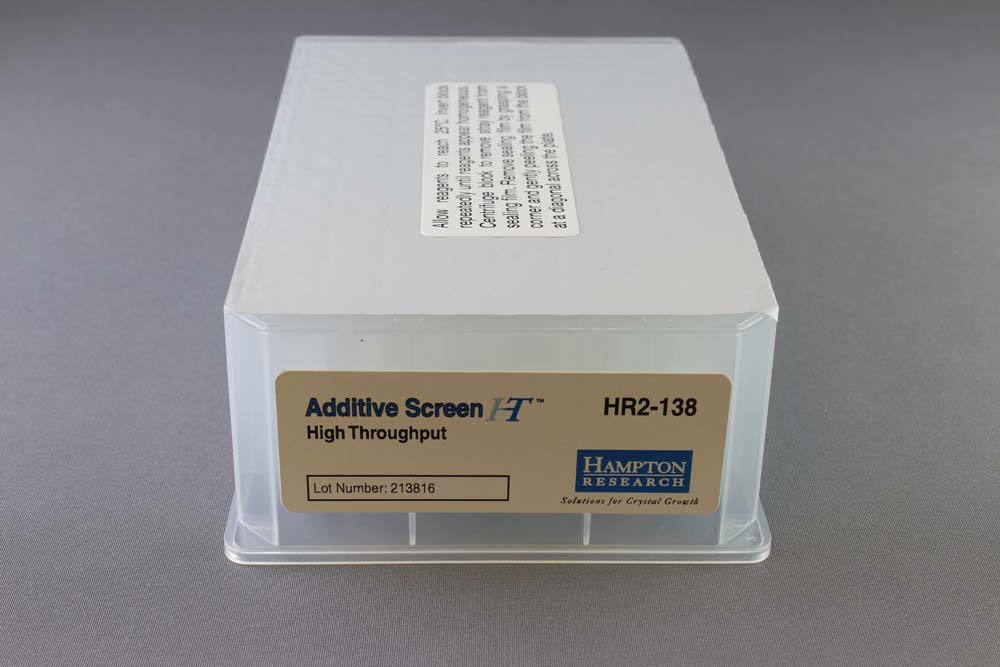Hampton Research蛋白结晶试剂盒






Products > Optimization Screens > Additive Screen > Additive Screen • Additive Screen HT
Additive Screen • Additive Screen HT
Applications
- Manipulate sample-sample & sample-solvent interactions to improve crystals or alter sample solubility
Features
- 18 classes of reagents
- Highly concentrated (10x) reagent formulation
- 96 unique reagents and excipients
- Tube or Deep Well block format
- Crystallization or sample solubility optimization
Description
Additive Screen is a library of reagents that can affect the solubility and crystallization of biological macromolecules, including both soluble and membrane proteins.
These reagents can perturb and manipulate sample-sample and sample-solvent interactions, as well as perturb water structure which can alter and improve both the solubility and crystallization of a sample. Additives can stabilize or engender conformity by specific interaction with the macromolecules. There are numerous reports of the use of additives to improve the quality and size of macromolecular crystals.1-5
Additive screen reagent classifications include multivalent, salt, amino acid, dissociating agent, linker, polyamine, osmolyte, chaotrope, co-factor, reducing agent, chelating agent, polymer, carbohydrate, non-detergent, amphiphile, detergent, non-volatile organic and volatile organic.
Additive Screen contains 96 unique reagents, 1 ml each.
Additive Screen HT contains 96 unique reagents, 1 ml each, in a single Deep Well block.

Click to Zoom In
CAT NO
HR2-428
NAME
DESCRIPTION
1 ml, tube format
PRICE
$495.00
cart quote
CAT NO
HR2-138
NAME
DESCRIPTION
1 ml, Deep Well block format
PRICE
$495.00
cart quote
Support Material(s)
 HR2-428 Additive Screen Documents
HR2-428 Additive Screen Documents HR2-428 Additive Screen SDS
HR2-428 Additive Screen SDS HR2-138 Additive Screen HT Documents
HR2-138 Additive Screen HT Documents HR2-138 Additive Screen HT SDS
HR2-138 Additive Screen HT SDS Additive Screen Formulation & Scoring Data
Additive Screen Formulation & Scoring Data Additive Screen Frequently Asked Questions
Additive Screen Frequently Asked Questions Related Item(S)
- Individual Additive Screen Reagents
References
1. Crystallization of membrane proteins., Edited by Hartmut Michel, CRC Press (1991).
2. Crystallization of Nucleic Acids and Proteins: A Practical Approach., Edited by A. Ducruix and R. Giege, Oxford University Press (1992).
3. Cudney, R., et al., Screening and optimization strategies for macromolecular crystal growth., Acta Cryst. (1994) D50, 414-423.
4. Sousa R., Use of glycerol, polyols and other protein structure stabilizing agents in protein crystallization., Acta Cryst. (1995) D51, 271-277.
5. Trakhanov, S. and Quiocho, F.A., Influence of divalent cations on protein crystallization., Protein Science (1995) 4, 9, 1914-1919.
6. Crystallization and preliminary X-ray diffraction analysis of YhbJ from Escherichia coli, a key protein involved in the GlmYZ sRNA regulatory cascade. M. Resch, Y. Gopel, B. Gorke and R. Ficner. M. Resch, Y. Gopel, B. Gorke and R. Ficner.
7. Crystal-contact engineering to obtain a crystal form of the Kelch domain of human Keap1 suitable for ligand-soaking experiments. Stefan Horer, Dirk Reinert, Katja Ostmann, Yvette Hoevels and Herbert Nar. Acta Cryst. (2013). F69, 592-596.
8. Thermofluor-based optimization strategy for the stabilization and crystallization of Campylobacter jejuni desulforubrerythrin. Santos SP, Bandeiras TM, Pinto AF, Teixeira M, Carrondo MA, Romão CV. Protein Expr Purif. 2012 Feb;81(2):193-200. doi: 10.1016/j.pep.2011.10.001. Epub 2011 Oct 24. (Thermofluor using the Additive Screen)


Hampton Research, first in crystallization since 1991, developing and delivering crystallization and optimization screens, reagents, plates, and other tools for the crystallization of biological macromolecules, including proteins (antibody), peptides (insulin), and nucleic acids (DNA).
- Products
- Gallery
- My Account
|
|
|
- Contact Us
- Quick Order
- Support
|
- Privacy Policy
- Terms and Conditions
|
- Products
- Gallery
- My Account
- Support
- Contact Us
- Quick Order
- Privacy Policy
- Terms and Conditions
|
|
|
|
|
|
|
© 2022 HAMPTON RESEARCH CORP.
| Website by Skyhound Internet








